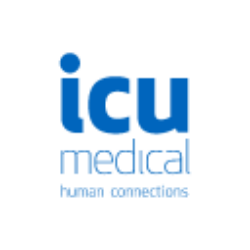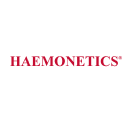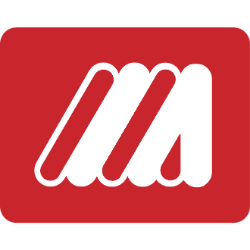OSUR

OraSure Technologies, Inc.
OSUR
(2.2)3,79 USD
6.28% ROA
2.66% ROE
11.22x PER
304.984.347,00 USD
2.96% DER
0% Yield
6.16% NPM
OraSure Technologies, Inc. Stock Analysis
OraSure Technologies, Inc. Fundamental Analysis
Fundamental analysis in stock investing is like studying the foundation of a house before buying it. It involves looking at a company's financial health, like its earnings, assets, and debts, to determine if it's a good investment based on its fundamental strength and potential for growth.
| # | Analysis | Rating |
|---|---|---|
| 1 |
ROA
This stock has a great ability to make a lot of money from the things it owns, which makes it a really good investment for smart investors. |
|
| 2 |
DER
The stock has a low debt to equity ratio (4%), which means it has a small amount of debt compared to the ownership it holds |
|
| 3 |
ROE
The stock's ROE falls within an average range (11.58%), demonstrating satisfactory profitability and efficiency in utilizing shareholders' equity. |
|
| 4 |
PBV
The stock's PBV ratio (1.33x) indicates a justifiable valuation, presenting a compelling choice for investors seeking reasonable returns. |
|
| 5 |
Revenue Growth
This company's revenue has shown remarkable growth over the past three years, making it an excellent choice for seeking a consistently prosperous investment. |
|
| 6 |
Net Profit Growth
This company's net profit has consistently grown over the past three years, showcasing a positive financial trend and making it an appealing investment opportunity. |
|
| 7 |
Graham Number
The Graham number calculation reveals that this company's stock price is potentially underestimated, implying that it may be a promising investment option. |
|
| 8 |
Assets Growth
Company's revenue has stayed stagnant, showing no signs of improvement and making it a less favorable choice. |
|
| 9 |
Dividend Growth
Potential investors should be aware that the company's dividend growth has shown no upward trend in the past three years, indicating limited potential for increased returns. |
|
| 10 |
Dividend
The company's decision to withhold dividends for three years raises questions about its ability to generate consistent returns. |
|
| 11 |
Buffet Intrinsic Value
Warren Buffett's formula suggests that the company's stock is overpriced (-19), presenting a possible disadvantage for investors as its market price surpasses its estimated intrinsic value. |
OraSure Technologies, Inc. Technical Analysis
Technical analysis in stock investing is like reading the patterns on a weather map to predict future weather conditions. It involves studying past stock price movements and trading volumes to make predictions about where a stock's price might go next, without necessarily looking at the company's financial health.
| # | Analysis | Recommendation |
|---|---|---|
| 1 | Awesome Oscillator | Sell |
| 2 | MACD | Buy |
| 3 | RSI | Hold |
| 4 | Stoch RSI | Sell |
OraSure Technologies, Inc. Price Chart
Financial Statements
Financial statements are like report cards for companies. They show how much money a company makes (income statement), what it owns and owes (balance sheet), and where it spends its money (cash flow statement), helping stock investors understand if a company is healthy and worth investing in.
Income Statements
An income statement for a company is like a scoreboard for its profits and losses. It shows how much money the company made (revenue) and how much it spent to make that money (expenses), helping stock investors see if a company is making a profit or not.
Revenue in stock investing is the total amount of money a company earns from its sales, and it's a key factor that investors consider to assess a company's financial performance and growth potential.
| Year | Revenue | Growth |
|---|---|---|
| 1989 | 3.200.000 | |
| 1990 | 3.600.000 | 11.11% |
| 1991 | 3.800.000 | 5.26% |
| 1992 | 3.000.000 | -26.67% |
| 1993 | 3.300.000 | 9.09% |
| 1994 | 4.800.000 | 31.25% |
| 1995 | 5.000.000 | 4% |
| 1996 | 68.700.000 | 92.72% |
| 1997 | 9.400.000 | -630.85% |
| 1998 | 9.800.000 | 4.08% |
| 1999 | 10.100.000 | 2.97% |
| 2000 | 30.103.882 | 66.45% |
| 2001 | 32.573.344 | 7.58% |
| 2002 | 32.009.767 | -1.76% |
| 2003 | 40.451.285 | 20.87% |
| 2004 | 54.008.264 | 25.1% |
| 2005 | 69.366.192 | 22.14% |
| 2006 | 68.154.920 | -1.78% |
| 2007 | 82.685.876 | 17.57% |
| 2008 | 71.104.467 | -16.29% |
| 2009 | 77.026.226 | 7.69% |
| 2010 | 75.015.000 | -2.68% |
| 2011 | 81.881.000 | 8.39% |
| 2012 | 87.820.000 | 6.76% |
| 2013 | 98.940.000 | 11.24% |
| 2014 | 106.464.000 | 7.07% |
| 2015 | 119.719.000 | 11.07% |
| 2016 | 128.198.000 | 6.61% |
| 2017 | 167.064.000 | 23.26% |
| 2018 | 181.743.000 | 8.08% |
| 2019 | 154.605.000 | -17.55% |
| 2020 | 171.721.000 | 9.97% |
| 2021 | 233.674.000 | 26.51% |
| 2022 | 387.479.000 | 39.69% |
| 2023 | 356.748.000 | -8.61% |
| 2023 | 405.472.000 | 12.02% |
| 2024 | 217.340.000 | -86.56% |
Research and Development Expenses are the costs a company incurs to create and improve its products or services, which can be important for investors to evaluate a company's innovation and potential for future growth.
| Year | Research and Development Expenses | Growth |
|---|---|---|
| 1989 | 0 | |
| 1990 | 0 | 0% |
| 1991 | 0 | 0% |
| 1992 | 0 | 0% |
| 1993 | 0 | 0% |
| 1994 | 6.100.000 | 100% |
| 1995 | 6.800.000 | 10.29% |
| 1996 | 4.500.000 | -51.11% |
| 1997 | 4.200.000 | -7.14% |
| 1998 | 2.900.000 | -44.83% |
| 1999 | 4.000.000 | 27.5% |
| 2000 | 10.399.120 | 61.54% |
| 2001 | 9.389.313 | -10.75% |
| 2002 | 8.274.351 | -13.47% |
| 2003 | 7.999.687 | -3.43% |
| 2004 | 6.062.275 | -31.96% |
| 2005 | 5.269.083 | -15.05% |
| 2006 | 8.647.484 | 39.07% |
| 2007 | 14.136.019 | 38.83% |
| 2008 | 20.255.451 | 30.21% |
| 2009 | 13.371.358 | -51.48% |
| 2010 | 13.192.000 | -1.36% |
| 2011 | 18.407.000 | 28.33% |
| 2012 | 12.445.000 | -47.91% |
| 2013 | 10.932.000 | -13.84% |
| 2014 | 12.058.000 | 9.34% |
| 2015 | 11.654.000 | -3.47% |
| 2016 | 9.754.000 | -19.48% |
| 2017 | 13.365.000 | 27.02% |
| 2018 | 16.250.000 | 17.75% |
| 2019 | 19.629.000 | 17.21% |
| 2020 | 31.032.000 | 36.75% |
| 2021 | 34.170.000 | 9.18% |
| 2022 | 36.237.000 | 5.7% |
| 2023 | 34.064.000 | -6.38% |
| 2023 | 33.728.000 | -1% |
| 2024 | 24.484.000 | -37.76% |
General and Administrative Expenses are the costs a company incurs to run its day-to-day operations, such as office rent, salaries, and utilities, which investors consider to understand a company's overall efficiency and management effectiveness.
| Year | General and Administrative Expenses | Growth |
|---|---|---|
| 1989 | 0 | |
| 1990 | 0 | 0% |
| 1991 | 0 | 0% |
| 1992 | 0 | 0% |
| 1993 | 0 | 0% |
| 1994 | 0 | 0% |
| 1995 | 0 | 0% |
| 1996 | 0 | 0% |
| 1997 | 0 | 0% |
| 1998 | 0 | 0% |
| 1999 | 0 | 0% |
| 2000 | 0 | 0% |
| 2001 | 14.732.822 | 100% |
| 2002 | 14.387.392 | -2.4% |
| 2003 | 17.675.884 | 18.6% |
| 2004 | 27.159.483 | 34.92% |
| 2005 | 28.550.487 | 4.87% |
| 2006 | 29.288.578 | 2.52% |
| 2007 | 37.366.300 | 21.62% |
| 2008 | 37.203.625 | -0.44% |
| 2009 | 18.299.103 | -103.31% |
| 2010 | 16.794.000 | -8.96% |
| 2011 | 20.325.000 | 17.37% |
| 2012 | 22.309.000 | 8.89% |
| 2013 | 21.654.000 | -3.02% |
| 2014 | 23.750.000 | 8.83% |
| 2015 | 25.493.000 | 6.84% |
| 2016 | 28.356.000 | 10.1% |
| 2017 | 29.321.000 | 3.29% |
| 2018 | 38.325.000 | 23.49% |
| 2019 | 35.287.000 | -8.61% |
| 2020 | 42.653.000 | 17.27% |
| 2021 | 50.328.000 | 15.25% |
| 2022 | 68.206.000 | 26.21% |
| 2023 | 40.204.000 | -69.65% |
| 2023 | 58.191.000 | 30.91% |
| 2024 | 47.380.000 | -22.82% |
EBITDA stands for Earnings Before Interest, Taxes, Depreciation, and Amortization. It is a measure that helps stock investors analyze a company's profitability by looking at its earnings without considering certain expenses. This helps to get a clearer picture of the company's financial performance and its ability to generate cash flow.
| Year | EBITDA | Growth |
|---|---|---|
| 1989 | -2.400.000 | |
| 1990 | -2.800.000 | 14.29% |
| 1991 | -4.200.000 | 33.33% |
| 1992 | -6.400.000 | 34.38% |
| 1993 | -12.300.000 | 47.97% |
| 1994 | -14.700.000 | 16.33% |
| 1995 | -10.100.000 | -45.54% |
| 1996 | -4.200.000 | -140.48% |
| 1997 | -4.300.000 | 2.33% |
| 1998 | -1.500.000 | -186.67% |
| 1999 | -2.700.000 | 44.44% |
| 2000 | -4.421.917 | 38.94% |
| 2001 | -1.886.598 | -134.39% |
| 2002 | -1.361.350 | -38.58% |
| 2003 | 1.291.054 | 205.44% |
| 2004 | 1.130.437 | -14.21% |
| 2005 | 9.919.576 | 88.6% |
| 2006 | 7.385.938 | -34.3% |
| 2007 | 1.516.762 | -386.95% |
| 2008 | -5.015.535 | 130.24% |
| 2009 | -5.024.263 | 0.17% |
| 2010 | -168.490 | -2881.94% |
| 2011 | -4.502.086 | 96.26% |
| 2012 | -9.090.000 | 50.47% |
| 2013 | -13.910.000 | 34.65% |
| 2014 | -3.995.000 | -248.19% |
| 2015 | 8.058.000 | 149.58% |
| 2016 | 26.010.000 | 69.02% |
| 2017 | 34.140.000 | 23.81% |
| 2018 | 34.880.000 | 2.12% |
| 2019 | 15.528.000 | -124.63% |
| 2020 | 3.438.000 | -351.66% |
| 2021 | 9.000 | -38100% |
| 2022 | 10.293.000 | 99.91% |
| 2023 | 43.576.000 | 76.38% |
| 2023 | 64.353.000 | 32.29% |
| 2024 | 10.288.000 | -525.52% |
Gross profit is the money a company makes from selling its products or services after subtracting the cost of producing or providing them, and it is an important measure for investors to understand a company's profitability.
| Year | Gross Profit | Growth |
|---|---|---|
| 1989 | -1.000.000 | |
| 1990 | 1.600.000 | 162.5% |
| 1991 | 1.900.000 | 15.79% |
| 1992 | 1.800.000 | -5.56% |
| 1993 | 1.600.000 | -12.5% |
| 1994 | -800.000 | 300% |
| 1995 | 100.000 | 900% |
| 1996 | 10.100.000 | 99.01% |
| 1997 | 6.600.000 | -53.03% |
| 1998 | 6.800.000 | 2.94% |
| 1999 | 7.000.000 | 2.86% |
| 2000 | 21.101.454 | 66.83% |
| 2001 | 20.239.649 | -4.26% |
| 2002 | 19.121.211 | -5.85% |
| 2003 | 24.389.828 | 21.6% |
| 2004 | 31.865.074 | 23.46% |
| 2005 | 41.392.285 | 23.02% |
| 2006 | 43.398.725 | 4.62% |
| 2007 | 50.283.082 | 13.69% |
| 2008 | 41.128.347 | -22.26% |
| 2009 | 47.130.394 | 12.73% |
| 2010 | 47.359.000 | 0.48% |
| 2011 | 51.717.000 | 8.43% |
| 2012 | 55.571.000 | 6.94% |
| 2013 | 58.589.000 | 5.15% |
| 2014 | 66.624.000 | 12.06% |
| 2015 | 80.293.000 | 17.02% |
| 2016 | 88.027.000 | 8.79% |
| 2017 | 98.956.000 | 11.04% |
| 2018 | 113.613.000 | 12.9% |
| 2019 | 94.583.000 | -20.12% |
| 2020 | 101.868.000 | 7.15% |
| 2021 | 117.600.000 | 13.38% |
| 2022 | 147.637.000 | 20.35% |
| 2023 | 177.360.000 | 16.76% |
| 2023 | 179.421.000 | 1.15% |
| 2024 | 102.312.000 | -75.37% |
Net income in stock investing is like the money a company actually gets to keep as profit after paying all its bills, and it's an important measure to understand how well a company is doing financially.
| Year | Net Profit | Growth |
|---|---|---|
| 1989 | -2.600.000 | |
| 1990 | -2.900.000 | 10.34% |
| 1991 | -4.900.000 | 40.82% |
| 1992 | -7.200.000 | 31.94% |
| 1993 | -14.700.000 | 51.02% |
| 1994 | -15.600.000 | 5.77% |
| 1995 | -18.500.000 | 15.68% |
| 1996 | -300.000 | -6066.67% |
| 1997 | -22.500.000 | 98.67% |
| 1998 | -1.900.000 | -1084.21% |
| 1999 | -3.200.000 | 40.63% |
| 2000 | -12.746.550 | 74.9% |
| 2001 | -3.727.789 | -241.93% |
| 2002 | -3.342.473 | -11.53% |
| 2003 | -1.135.537 | -194.35% |
| 2004 | -559.642 | -102.9% |
| 2005 | 27.448.087 | 102.04% |
| 2006 | 5.267.549 | -421.08% |
| 2007 | 2.472.439 | -113.05% |
| 2008 | -31.275.302 | 107.91% |
| 2009 | -7.813.133 | -300.29% |
| 2010 | -3.497.000 | -123.42% |
| 2011 | -8.841.000 | 60.45% |
| 2012 | -15.115.000 | 41.51% |
| 2013 | -11.190.000 | -35.08% |
| 2014 | -4.614.000 | -142.52% |
| 2015 | 8.167.000 | 156.5% |
| 2016 | 19.720.000 | 58.59% |
| 2017 | 30.948.000 | 36.28% |
| 2018 | 20.396.000 | -51.74% |
| 2019 | 16.656.000 | -22.45% |
| 2020 | -14.922.000 | 211.62% |
| 2021 | -22.998.000 | 35.12% |
| 2022 | -17.935.000 | -28.23% |
| 2023 | 44.636.000 | 140.18% |
| 2023 | 53.655.000 | 16.81% |
| 2024 | -2.460.000 | 2281.1% |
EPS, or earnings per share, is a measure that shows how much profit a company has earned for each outstanding share of its stock, and it is important for stock investors as it helps understand the profitability of a company and compare it with other companies in the market.
| Year | Earning per Share (EPS) | Growth |
|---|---|---|
| 1989 | 0 | |
| 1990 | 0 | 0% |
| 1991 | 0 | 0% |
| 1992 | -1 | 0% |
| 1993 | -1 | 100% |
| 1994 | -1 | 0% |
| 1995 | -1 | 0% |
| 1996 | 0 | 0% |
| 1997 | -1 | 100% |
| 1998 | 0 | 0% |
| 1999 | 0 | 0% |
| 2000 | 0 | 0% |
| 2001 | 0 | 0% |
| 2002 | 0 | 0% |
| 2003 | 0 | 0% |
| 2004 | 0 | 0% |
| 2005 | 1 | 0% |
| 2006 | 0 | 0% |
| 2007 | 0 | 0% |
| 2008 | -1 | 0% |
| 2009 | 0 | 0% |
| 2010 | 0 | 0% |
| 2011 | 0 | 0% |
| 2012 | 0 | 0% |
| 2013 | 0 | 0% |
| 2014 | 0 | 0% |
| 2015 | 0 | 0% |
| 2016 | 0 | 0% |
| 2017 | 1 | 0% |
| 2018 | 0 | 0% |
| 2019 | 0 | 0% |
| 2020 | 0 | 0% |
| 2021 | 0 | 0% |
| 2022 | 0 | 0% |
| 2023 | 1 | 0% |
| 2023 | 1 | 0% |
| 2024 | 0 | 0% |
Cashflow Statements
Cashflow statements show the movement of money in and out of a company, helping stock investors understand how much money a company makes and spends. By examining cashflow statements, investors can assess if a company is generating enough cash to pay its bills, invest in growth, and provide returns to stockholders.
Free cash flow is the leftover cash that a company generates after covering its operating expenses and capital expenditures, which is important for stock investors as it shows how much money a company has available to invest in growth, pay dividends, or reduce debt.
| Year | Free Cashflow | Growth |
|---|---|---|
| 1989 | -2.300.000 | |
| 1990 | -3.000.000 | 23.33% |
| 1991 | -5.300.000 | 43.4% |
| 1992 | -6.300.000 | 15.87% |
| 1993 | -11.600.000 | 45.69% |
| 1994 | -15.900.000 | 27.04% |
| 1995 | -16.000.000 | 0.63% |
| 1996 | -2.600.000 | -515.38% |
| 1997 | -2.800.000 | 7.14% |
| 1998 | -1.600.000 | -75% |
| 1999 | -3.100.000 | 48.39% |
| 2000 | -13.066.011 | 76.27% |
| 2001 | -8.019.489 | -62.93% |
| 2002 | -2.166.636 | -270.14% |
| 2003 | 1.708.074 | 226.85% |
| 2004 | 1.926.072 | 11.32% |
| 2005 | 8.344.169 | 76.92% |
| 2006 | 4.042.538 | -106.41% |
| 2007 | 1.880.109 | -115.02% |
| 2008 | -6.303.612 | 129.83% |
| 2009 | -1.492.316 | -322.4% |
| 2010 | -2.718.608 | 45.11% |
| 2011 | -5.498.907 | 50.56% |
| 2012 | 3.353.000 | 264% |
| 2013 | 5.824.000 | 42.43% |
| 2014 | 4.521.000 | -28.82% |
| 2015 | 12.029.000 | 62.42% |
| 2016 | 18.414.000 | 34.67% |
| 2017 | 23.819.000 | 22.69% |
| 2018 | 32.746.000 | 27.26% |
| 2019 | 490.000 | -6582.86% |
| 2020 | -23.117.000 | 102.12% |
| 2021 | -83.499.000 | 72.31% |
| 2022 | -111.111.000 | 24.85% |
| 2023 | 131.280.000 | 184.64% |
| 2023 | 9.068.000 | -1347.73% |
| 2024 | 6.227.000 | -45.62% |
Operating cash flow represents the cash generated or consumed by a company's day-to-day operations, excluding external investing or financing activities, and is crucial for stock investors as it shows how much cash a company is generating from its core business operations.
| Year | Operating Cashflow | Growth |
|---|---|---|
| 1989 | -2.200.000 | |
| 1990 | -2.700.000 | 18.52% |
| 1991 | -3.200.000 | 15.63% |
| 1992 | -5.300.000 | 39.62% |
| 1993 | -10.400.000 | 49.04% |
| 1994 | -13.300.000 | 21.8% |
| 1995 | -14.600.000 | 8.9% |
| 1996 | -1.500.000 | -873.33% |
| 1997 | -2.300.000 | 34.78% |
| 1998 | -1.500.000 | -53.33% |
| 1999 | -2.400.000 | 37.5% |
| 2000 | -9.994.446 | 75.99% |
| 2001 | -5.255.850 | -90.16% |
| 2002 | -517.507 | -915.61% |
| 2003 | 2.701.796 | 119.15% |
| 2004 | 3.438.216 | 21.42% |
| 2005 | 10.392.336 | 66.92% |
| 2006 | 16.885.804 | 38.46% |
| 2007 | 11.583.879 | -45.77% |
| 2008 | -2.460.342 | 570.82% |
| 2009 | -292.765 | -740.38% |
| 2010 | 3.887.167 | 107.53% |
| 2011 | -2.993.984 | 229.83% |
| 2012 | 5.372.000 | 155.73% |
| 2013 | 8.286.000 | 35.17% |
| 2014 | 7.526.000 | -10.1% |
| 2015 | 15.773.000 | 52.29% |
| 2016 | 22.767.000 | 30.72% |
| 2017 | 28.156.000 | 19.14% |
| 2018 | 39.090.000 | 27.97% |
| 2019 | 9.804.000 | -298.71% |
| 2020 | 5.807.000 | -68.83% |
| 2021 | -35.382.000 | 116.41% |
| 2022 | -47.202.000 | 25.04% |
| 2023 | 141.583.000 | 133.34% |
| 2023 | 11.159.000 | -1168.78% |
| 2024 | 7.844.000 | -42.26% |
Capex, short for capital expenditures, refers to the money a company spends on acquiring or upgrading tangible assets like buildings, equipment, or technology, which is important for stock investors as it indicates how much a company is investing in its infrastructure to support future growth and profitability.
| Year | Capital Expenditure | Growth |
|---|---|---|
| 1989 | 100.000 | |
| 1990 | 300.000 | 66.67% |
| 1991 | 2.100.000 | 85.71% |
| 1992 | 1.000.000 | -110% |
| 1993 | 1.200.000 | 16.67% |
| 1994 | 2.600.000 | 53.85% |
| 1995 | 1.400.000 | -85.71% |
| 1996 | 1.100.000 | -27.27% |
| 1997 | 500.000 | -120% |
| 1998 | 100.000 | -400% |
| 1999 | 700.000 | 85.71% |
| 2000 | 3.071.565 | 77.21% |
| 2001 | 2.763.639 | -11.14% |
| 2002 | 1.649.129 | -67.58% |
| 2003 | 993.722 | -65.95% |
| 2004 | 1.512.144 | 34.28% |
| 2005 | 2.048.167 | 26.17% |
| 2006 | 12.843.266 | 84.05% |
| 2007 | 9.703.770 | -32.35% |
| 2008 | 3.843.270 | -152.49% |
| 2009 | 1.199.551 | -220.39% |
| 2010 | 6.605.775 | 81.84% |
| 2011 | 2.504.923 | -163.71% |
| 2012 | 2.019.000 | -24.07% |
| 2013 | 2.462.000 | 17.99% |
| 2014 | 3.005.000 | 18.07% |
| 2015 | 3.744.000 | 19.74% |
| 2016 | 4.353.000 | 13.99% |
| 2017 | 4.337.000 | -0.37% |
| 2018 | 6.344.000 | 31.64% |
| 2019 | 9.314.000 | 31.89% |
| 2020 | 28.924.000 | 67.8% |
| 2021 | 48.117.000 | 39.89% |
| 2022 | 63.909.000 | 24.71% |
| 2023 | 10.303.000 | -520.3% |
| 2023 | 2.091.000 | -392.73% |
| 2024 | 1.617.000 | -29.31% |
Balance Sheet
Balance sheets provide a snapshot of a company's financial health and its assets (such as cash, inventory, and property) and liabilities (like debts and obligations) at a specific point in time. For stock investors, balance sheets help assess the company's overall worth and evaluate its ability to meet financial obligations and support future growth.
Equity refers to the ownership interest or stake that shareholders have in a company, representing their claim on its assets and earnings after all debts and liabilities are paid.
| Year | Equity | Growth |
|---|---|---|
| 1989 | 7.200.000 | |
| 1990 | 5.700.000 | -26.32% |
| 1991 | 14.300.000 | 60.14% |
| 1992 | 9.200.000 | -55.43% |
| 1993 | 8.000.000 | -15% |
| 1994 | 18.500.000 | 56.76% |
| 1995 | 22.300.000 | 17.04% |
| 1996 | 28.900.000 | 22.84% |
| 1997 | 15.000.000 | -92.67% |
| 1998 | 8.300.000 | -80.72% |
| 1999 | 8.600.000 | 3.49% |
| 2000 | 26.172.076 | 67.14% |
| 2001 | 26.540.673 | 1.39% |
| 2002 | 26.018.912 | -2.01% |
| 2003 | 73.509.289 | 64.6% |
| 2004 | 75.577.005 | 2.74% |
| 2005 | 118.919.042 | 36.45% |
| 2006 | 129.503.975 | 8.17% |
| 2007 | 140.054.589 | 7.53% |
| 2008 | 108.325.250 | -29.29% |
| 2009 | 103.806.990 | -4.35% |
| 2010 | 102.843.000 | -0.94% |
| 2011 | 100.249.000 | -2.59% |
| 2012 | 170.315.000 | 41.14% |
| 2013 | 161.146.000 | -5.69% |
| 2014 | 158.701.000 | -1.54% |
| 2015 | 159.436.000 | 0.46% |
| 2016 | 185.850.000 | 14.21% |
| 2017 | 258.081.000 | 27.99% |
| 2018 | 283.378.000 | 8.93% |
| 2019 | 307.145.000 | 7.74% |
| 2020 | 398.571.000 | 22.94% |
| 2021 | 380.533.000 | -4.74% |
| 2022 | 363.624.000 | -4.65% |
| 2023 | 404.885.000 | 10.19% |
| 2023 | 430.671.000 | 5.99% |
| 2024 | 425.840.000 | -1.13% |
Assets represent the valuable resources that a company owns, such as cash, inventory, property, and equipment, and understanding a company's assets helps investors assess its value and potential for generating future profits.
| Year | Assets | Growth |
|---|---|---|
| 1989 | 8.100.000 | |
| 1990 | 6.400.000 | -26.56% |
| 1991 | 15.200.000 | 57.89% |
| 1992 | 15.700.000 | 3.18% |
| 1993 | 14.100.000 | -11.35% |
| 1994 | 24.600.000 | 42.68% |
| 1995 | 30.100.000 | 18.27% |
| 1996 | 45.200.000 | 33.41% |
| 1997 | 17.000.000 | -165.88% |
| 1998 | 10.400.000 | -63.46% |
| 1999 | 10.700.000 | 2.8% |
| 2000 | 37.736.172 | 71.65% |
| 2001 | 37.284.675 | -1.21% |
| 2002 | 35.737.247 | -4.33% |
| 2003 | 86.151.307 | 58.52% |
| 2004 | 88.064.324 | 2.17% |
| 2005 | 130.747.203 | 32.65% |
| 2006 | 156.565.463 | 16.49% |
| 2007 | 167.352.516 | 6.45% |
| 2008 | 131.918.189 | -26.86% |
| 2009 | 126.990.747 | -3.88% |
| 2010 | 122.520.000 | -3.65% |
| 2011 | 127.861.000 | 4.18% |
| 2012 | 191.725.000 | 33.31% |
| 2013 | 184.245.000 | -4.06% |
| 2014 | 189.633.000 | 2.84% |
| 2015 | 189.321.000 | -0.16% |
| 2016 | 207.935.000 | 8.95% |
| 2017 | 296.201.000 | 29.8% |
| 2018 | 315.571.000 | 6.14% |
| 2019 | 349.295.000 | 9.65% |
| 2020 | 454.472.000 | 23.14% |
| 2021 | 460.990.000 | 1.41% |
| 2022 | 444.708.000 | -3.66% |
| 2023 | 458.432.000 | 2.99% |
| 2023 | 482.845.000 | 5.06% |
| 2024 | 466.343.000 | -3.54% |
Liabilities refer to the financial obligations or debts that a company owes to creditors or external parties, and understanding a company's liabilities is important for investors as it helps assess the company's financial risk and ability to meet its obligations.
| Year | Liabilities | Growth |
|---|---|---|
| 1989 | 900.000 | |
| 1990 | 700.000 | -28.57% |
| 1991 | 900.000 | 22.22% |
| 1992 | 6.500.000 | 86.15% |
| 1993 | 6.100.000 | -6.56% |
| 1994 | 6.100.000 | 0% |
| 1995 | 7.800.000 | 21.79% |
| 1996 | 16.300.000 | 52.15% |
| 1997 | 2.000.000 | -715% |
| 1998 | 2.100.000 | 4.76% |
| 1999 | 2.100.000 | 0% |
| 2000 | 11.564.096 | 81.84% |
| 2001 | 10.744.002 | -7.63% |
| 2002 | 9.718.335 | -10.55% |
| 2003 | 12.642.018 | 23.13% |
| 2004 | 12.487.319 | -1.24% |
| 2005 | 11.828.161 | -5.57% |
| 2006 | 27.061.488 | 56.29% |
| 2007 | 27.297.927 | 0.87% |
| 2008 | 23.592.939 | -15.7% |
| 2009 | 23.183.757 | -1.76% |
| 2010 | 19.677.000 | -17.82% |
| 2011 | 27.612.000 | 28.74% |
| 2012 | 21.410.000 | -28.97% |
| 2013 | 23.099.000 | 7.31% |
| 2014 | 30.932.000 | 25.32% |
| 2015 | 29.885.000 | -3.5% |
| 2016 | 22.085.000 | -35.32% |
| 2017 | 38.120.000 | 42.06% |
| 2018 | 32.193.000 | -18.41% |
| 2019 | 42.150.000 | 23.62% |
| 2020 | 55.901.000 | 24.6% |
| 2021 | 80.457.000 | 30.52% |
| 2022 | 81.084.000 | 0.77% |
| 2023 | 16.790.000 | -382.93% |
| 2023 | 52.174.000 | 67.82% |
| 2024 | 40.503.000 | -28.82% |
OraSure Technologies, Inc. Financial Ratio (TTM)
Valuation Metrics
- Revenue per Share
- 3.69
- Net Income per Share
- 0.36
- Price to Earning Ratio
- 11.22x
- Price To Sales Ratio
- 1.11x
- POCF Ratio
- 4.52
- PFCF Ratio
- 5.04
- Price to Book Ratio
- 0.71
- EV to Sales
- 0.22
- EV Over EBITDA
- 2.46
- EV to Operating CashFlow
- 0.88
- EV to FreeCashFlow
- 0.98
- Earnings Yield
- 0.09
- FreeCashFlow Yield
- 0.2
- Market Cap
- 0,30 Bil.
- Enterprise Value
- 0,06 Bil.
- Graham Number
- 6.86
- Graham NetNet
- 3.7
Income Statement Metrics
- Net Income per Share
- 0.36
- Income Quality
- 2.48
- ROE
- 0.06
- Return On Assets
- 0.02
- Return On Capital Employed
- -0
- Net Income per EBT
- 0.8
- EBT Per Ebit
- -8.65
- Ebit per Revenue
- -0.01
- Effective Tax Rate
- 0.12
Margins
- Sales, General, & Administrative to Revenue
- 0.17
- Research & Developement to Revenue
- 0.11
- Stock Based Compensation to Revenue
- 0.04
- Gross Profit Margin
- 0.56
- Operating Profit Margin
- -0.01
- Pretax Profit Margin
- 0.08
- Net Profit Margin
- 0.06
Dividends
- Dividend Yield
- 0
- Dividend Yield %
- 0
- Payout Ratio
- 0
- Dividend Per Share
- 0
Operating Metrics
- Operating Cashflow per Share
- 0.9
- Free CashFlow per Share
- 0.82
- Capex to Operating CashFlow
- 0.1
- Capex to Revenue
- 0.02
- Capex to Depreciation
- 0.54
- Return on Invested Capital
- 0.03
- Return on Tangible Assets
- 0.06
- Days Sales Outstanding
- 50.84
- Days Payables Outstanding
- 23.08
- Days of Inventory on Hand
- 97.18
- Receivables Turnover
- 7.18
- Payables Turnover
- 15.81
- Inventory Turnover
- 3.76
- Capex per Share
- 0.09
Balance Sheet
- Cash per Share
- 3,61
- Book Value per Share
- 5,74
- Tangible Book Value per Share
- 5.26
- Shareholders Equity per Share
- 5.74
- Interest Debt per Share
- 0.21
- Debt to Equity
- 0.03
- Debt to Assets
- 0.03
- Net Debt to EBITDA
- -10.17
- Current Ratio
- 12.17
- Tangible Asset Value
- 0,39 Bil.
- Net Current Asset Value
- 0,31 Bil.
- Invested Capital
- 408727000
- Working Capital
- 0,32 Bil.
- Intangibles to Total Assets
- 0.08
- Average Receivables
- 0,04 Bil.
- Average Payables
- 0,01 Bil.
- Average Inventory
- 40717500
- Debt to Market Cap
- 0.04
Dividends
Dividends in stock investing are like rewards that companies give to their shareholders. They are a portion of the company's profits distributed to investors, typically in the form of cash payments, as a way for them to share in the company's success.
| Year | Dividends | Growth |
|---|---|---|
| 1998 | 2 |
OraSure Technologies, Inc. Profile
About OraSure Technologies, Inc.
OraSure Technologies, Inc., together with its subsidiaries, develops, manufactures, markets, and sells oral fluid diagnostic products and specimen collection devices in the United States, Europe, and internationally. It operates in two segments, Diagnostics and Molecular Solutions. The company's principal products include InteliSwab COVID-19 rapid test, InteliSwab COVID-19 rapid test pro, InteliSwab COVID-19 rapid test rx, OraQuick Rapid HIV test, OraQuick In-Home HIV test, OraQuick HIV self-test, OraQuick HCV rapid antibody test, OraQuick Ebola rapid antigen test, OraSure oral fluid collection device used in conjunction with screening and confirmatory tests for HIV-1 antibodies; Intercept drug testing systems; immunoassay tests and reagents; and Q.E.D. saliva alcohol test. It also offers genomic products under the Oragene and ORAcollect brands; microbiome collection products; and GenoFIND genomics laboratory services. In addition, the company provides ORAcollect, RNA and OMNIgene, and RAL collection devices for use in connection with COVID-19 molecular testing; offers Colli-Pee collection device for the volumetric collection of first void urine; and manufactures and sells kits that are used to collect, stabilize, transport, and store samples of genetic material for molecular testing in the academic research and commercial applications, including ancestry, disease risk management, lifestyle, and animal testing. Further, it provides other diagnostic products, such as immunoassays and other in vitro diagnostic tests. The company markets its products to clinical laboratories, hospitals, clinics, community-based organizations and other public health organizations, distributors, government agencies, physicians' offices, and commercial and industrial entities. OraSure Technologies, Inc. was incorporated in 2000 and is headquartered in Bethlehem, Pennsylvania.
- CEO
- Ms. Carrie Eglinton Manner
- Employee
- 638
- Address
-
220 East First Street
Bethlehem, 18015
OraSure Technologies, Inc. Executives & BODs
| # | Name | Age |
|---|---|---|
| 1 |
Ms. Carrie Eglinton Manner President, Chief Executive Officer & Director |
70 |
| 2 |
Mr. Kenneth J. McGrath Chief Financial Officer |
70 |
| 3 |
Ms. Kathleen Gallagher Weber Chief Product Officer |
70 |
| 4 |
Ms. Michele Anthony Senior Vice President, Chief Accounting Officer, Controller & Assistant Secretary |
70 |
| 5 |
Mr. Jason Michael Plagman Vice President of Investor Relations |
70 |
| 6 |
Mr. Stefano Taucer General Counsel & Corporate Secretary |
70 |
| 7 |
Mr. David A. Rappaport C.F.A. Senior Vice President Corporate Development, Strategy & Integration |
70 |
| 8 |
Amy Steigerwalt Senior Vice President of Human Resources |
70 |
| 9 |
Mr. Rafal Iwasiow Ph.D. Vice President of Science, Innovation & Technology |
70 |
| 10 |
Mr. Zachary Wert Senior Vice President of Global Operations |
70 |












